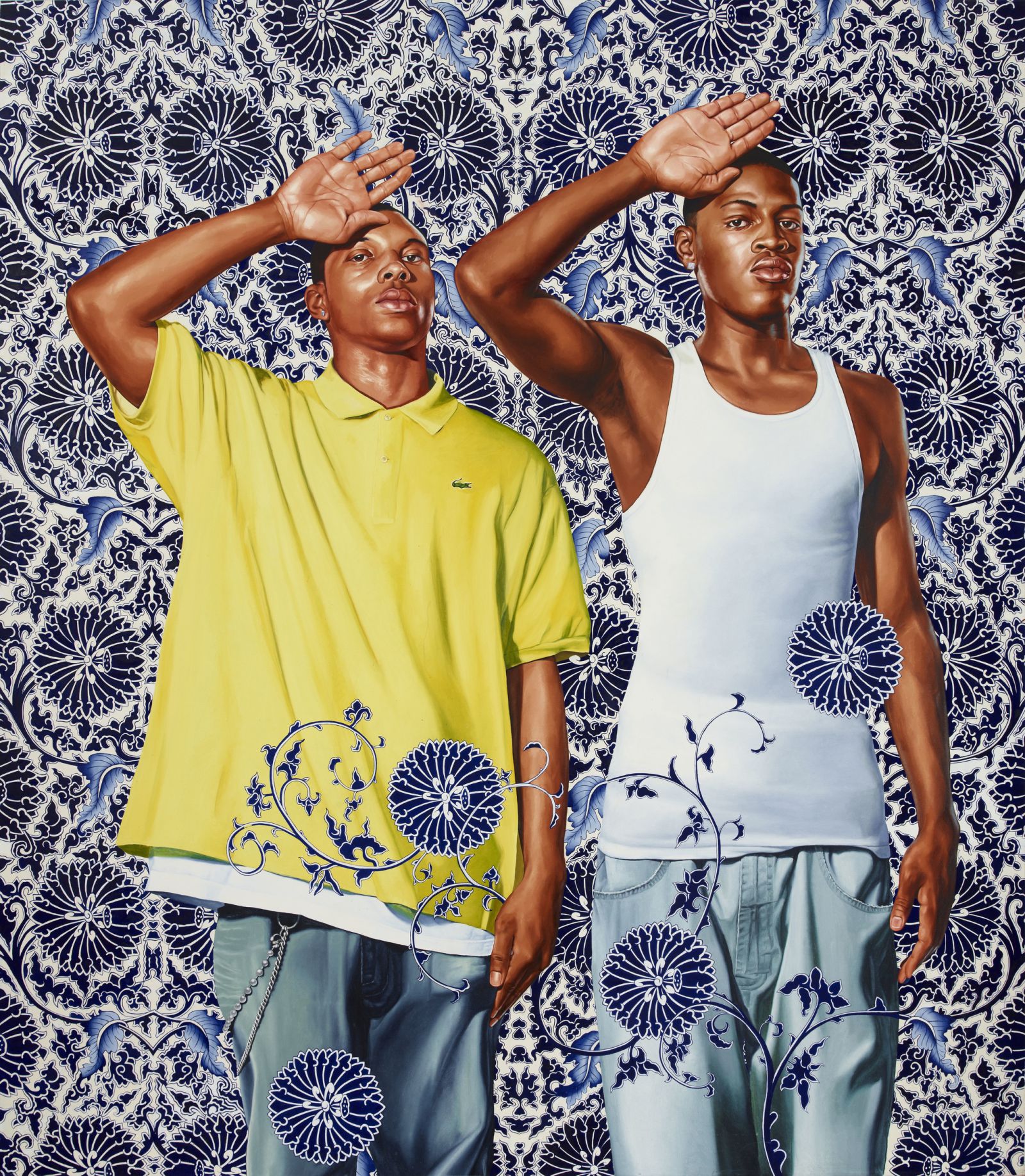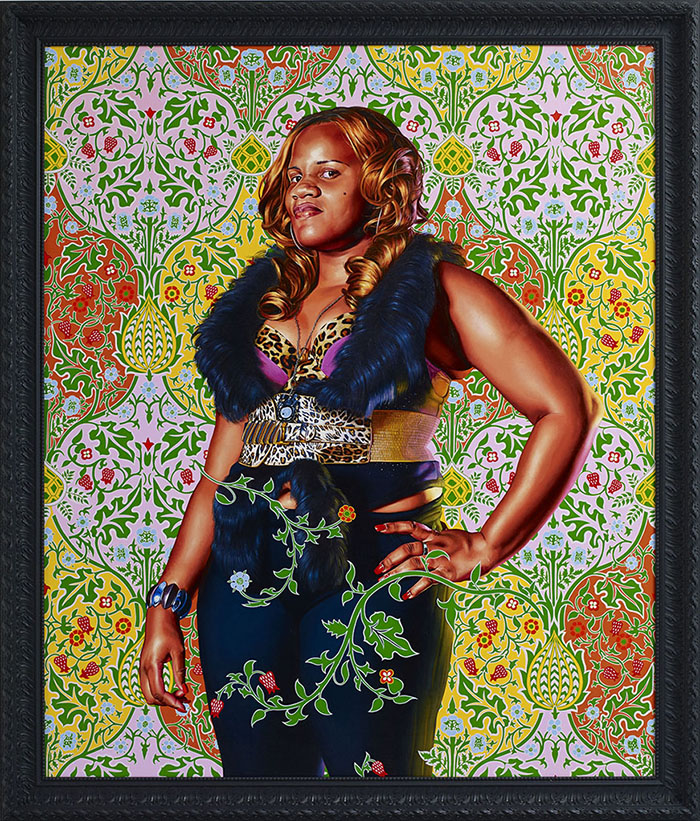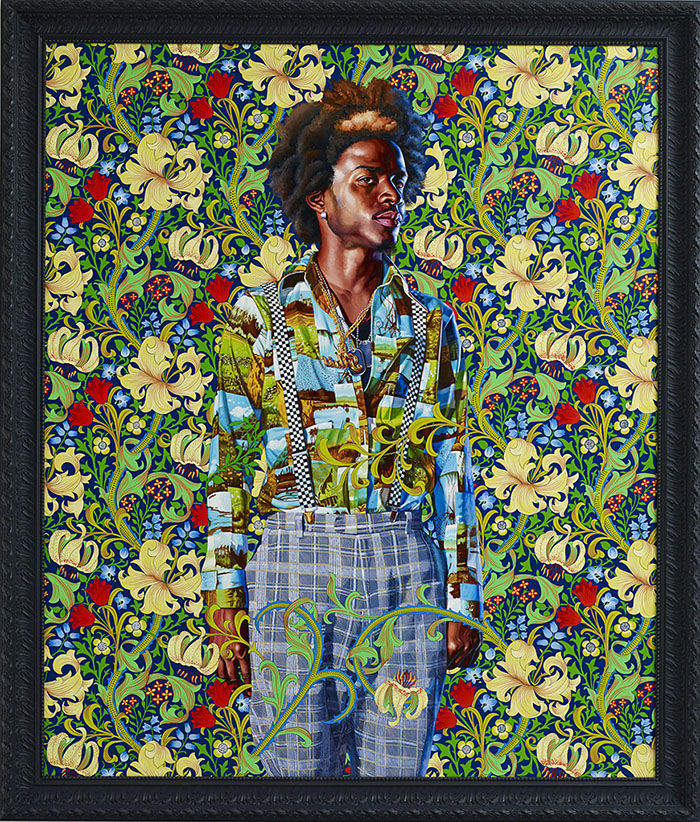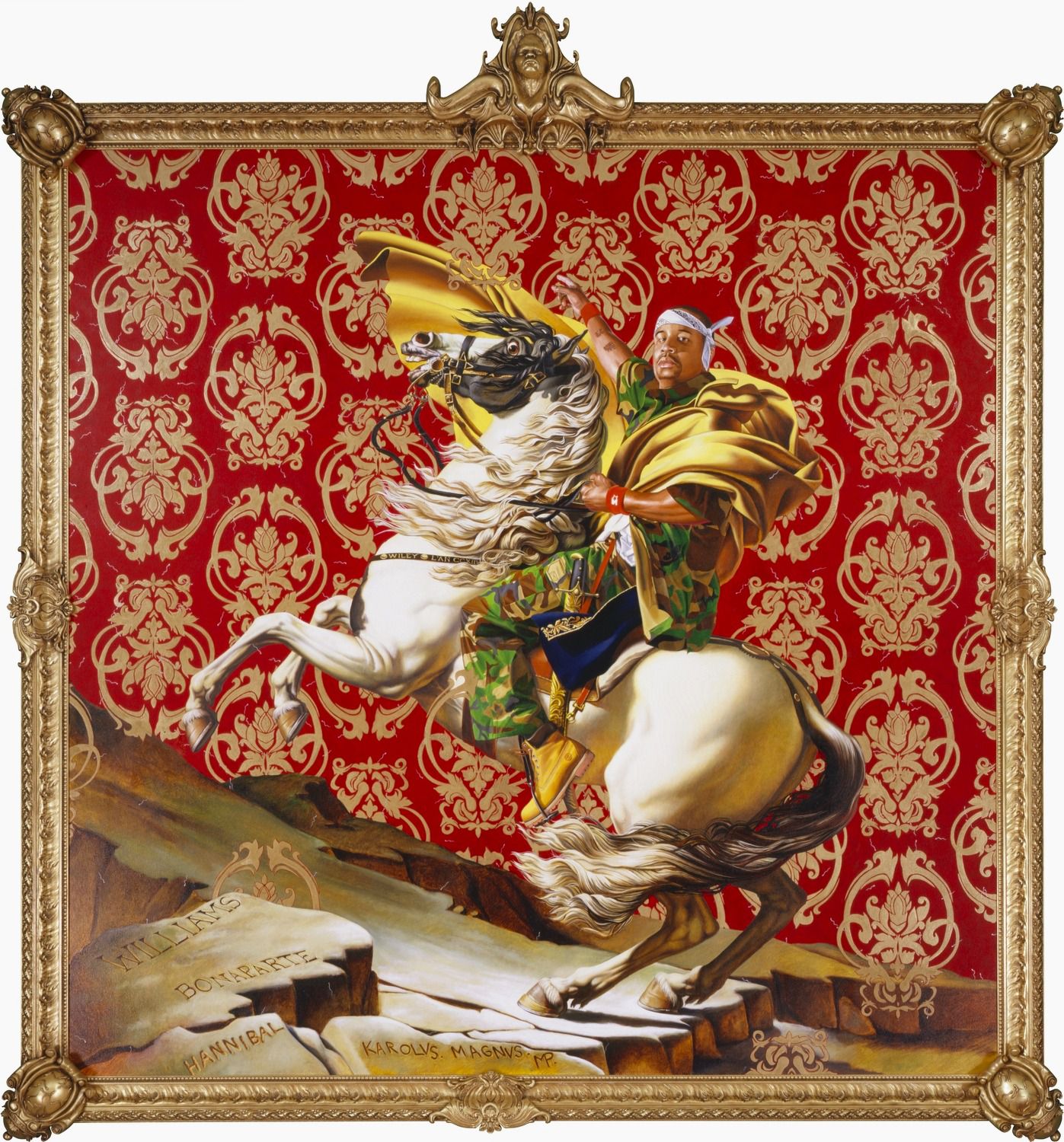VISUAL STORYTELLING CASE STUDY #4: THE POWER + POLITICS OF PATTERN
As promised, this is part 2 of my case study of the work of Kehinde Wiley.
We humans have been obsessed the world over with creating and looking at patterns. I think it is a 2-way communication with the natural world around us which is microcosmically and macrocosmically seething with pattern. Patterns are inscribed in our bodies and our lands and our heavens.
So pattern is inscribed in our cultures, languages, and stories in a way that is as inherent and inseparable from our beings as our blood and breath. Think drumbeats. Think rituals. Think doodles.
Visually: what we draw, stamp, paint, print, embroider, weave and etch into the world is as much a language, full of vocabulary and system of symbols as our written and spoken language.
We are all multilingual, driven by our senses and our meaning-making to give form to the formless, and build fluent languages from simple vocabularies and elements. Images, music, dances, rituals, poems, meals.
Which brings us to the stories embedded in visual patterns: one of Kehinde Wiley's spaces of communication and play.
Textile patterns, like all language, communicate more than simply a visual phenomenon. Think of: Military camouflage. Dora the Explorer bedsheets. Victorian-era chair upholstery. Jungle-print velour. Stars and stripes. Ikea textiles. Handmade block-printed Indian textile. Mandalas. Polka dots. African wax-printed fabrics. Paisley. Patterns in maps. Argyle.
Every one of these (and a billion others) communicate to us. About wealth, status, nations, cultures, spiritual ideas, world views, functions, feelings, philosophies, histories, eras.
Example: speaking of African Wax-printed fabrics. Nadege Seppou outlines here how those varied and gorgeous beautiful colored fabrics so widely associated with "Africanness" are a products of colonial economics, and were/are not designed in Africa at all, but in Europe - after European traders appropriated batik techniques from Indonesia into their work and then found African markets for it. The facets of the patterns that look "African" to us are a result of an imperialist form of market research: the manufacturers responding to what African consumers seemed to enjoy. In the meantime, these fabrics have been truly absorbed into culture and society in much of Africa and are widely reclaimed, enjoyed, and improved upon by residents of Africa.
Those flowers, and triangles, and stripes and shapes and colors of wax-printed "African" fabrics become a kind of container for all kinds of references, associations and feelings - changing and shifting from viewer to viewer. The meaning of a pattern is never fixed, it is entirely context-dependent.
Another example: American military camouflage. How is it felt and interpreted by an American soldier? Someone whose country the US is at war with? A punk rocker who integrates it into fashion? A fashion designer? A child who doesn't know the use?
So much political, historical content can be inscribed into a pattern. Patterns and designs, like most contemporary music, are complex mashups of historical and cultural movements across the globe, inseparable from the political dynamics and economics that entails.
That's the kind of complexity embedded in Wiley's paintings, where patterns are active, powerful, sometimes erasing and sometimes revealing actors in these out-of-time-and-space (so we can talk about time and space) theaters he is creating.
So how does this relate to you, and to making powerful images that help you build your business, get more visibility and influence culture?
How can use use pattern to powerfully communicate your work?
The answer is to start by simply listening - looking - noticing. And let your creative mind, the one that's always creating just beyond your awareness, to start putting it together. Ways to stimulate this process:
- Start looking at patterns around you, in your living space and workplace, in the streets etc and start noticing what you are drawn to. Why? And ask yourself: what is that pattern communicating? Personally, culturally, socially? And see what thought comes up. Patterns are flexible: they can mean different things to different people, and their meanings change through time and place. So, there is no right or wrong answer here: YOU know what a pattern communicates to you.
- Brainstorm ways you could use pattern in your work to communicate something. Collect patterns around you and photograph them together. How do the patterns communicate with you, with each other?
- Do you doodle, or have you gone through period of doodling? Were patterns involved? You may have an inner set of patterns that wants to come out. Listen.
Think about your "ideal" client, your collaborators, your audiences. What are the visual cultural forms they like and are drawn to? Look at their visual presences online. Take stock. How can you use pattern to communicate to them - invite them to your work, invite them to think, delight them, challenge them?
If you could make a wallpaper or fabric pattern that represented an idea, a value, a question, a desire or delight embedded in your own business, what would it be? Once you know the answer...guess what? Its not that hard to make a pattern. Google for methods. Or find something similar with web research.
Have fun...and remember, bring questions and explorations to the Tactical Imagination Club on Facebook.




